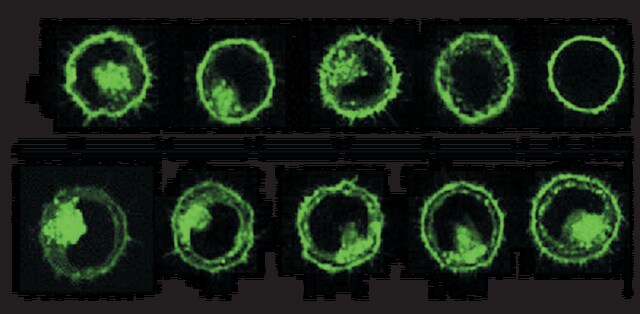Key Documents
MIDI26
PKH26 Red Fluorescent Cell Linker Midi Kit for General Cell Membrane Labeling
Distributed for Phanos Technologies
Synonim(y):
pkh membrane dye, red pkh
About This Item
Polecane produkty
opakowanie
pkg of 1 kit
producent / nazwa handlowa
Distributed for Phanos Technologies
warunki przechowywania
protect from light
metody
flow cytometry: suitable
fluorescencja
λex 551 nm; λem 567 nm (PKH26 dye)
Zastosowanie
cell analysis
detection
metoda wykrywania
fluorometric
Warunki transportu
ambient
temp. przechowywania
room temp
Opis ogólny
Zastosowanie
Powiązanie
Informacje prawne
Tylko elementy zestawu
- Diluent C 60 mL
- PKH26 Cell Linker in Ethanol .2 mL
Hasło ostrzegawcze
Danger
Zwroty wskazujące rodzaj zagrożenia
Zwroty wskazujące środki ostrożności
Klasyfikacja zagrożeń
Eye Irrit. 2 - Flam. Liq. 2
Kod klasy składowania
3 - Flammable liquids
Temperatura zapłonu (°F)
57.2 °F - closed cup
Temperatura zapłonu (°C)
14 °C - closed cup
Certyfikaty analizy (CoA)
Poszukaj Certyfikaty analizy (CoA), wpisując numer partii/serii produktów. Numery serii i partii można znaleźć na etykiecie produktu po słowach „seria” lub „partia”.
Masz już ten produkt?
Dokumenty związane z niedawno zakupionymi produktami zostały zamieszczone w Bibliotece dokumentów.
Klienci oglądali również te produkty
Produkty
PKH and CellVue® Fluorescent Cell Linker Kits provide fluorescent labeling of live cells over an extended period of time, with no apparent toxic effects.
Nasz zespół naukowców ma doświadczenie we wszystkich obszarach badań, w tym w naukach przyrodniczych, materiałoznawstwie, syntezie chemicznej, chromatografii, analityce i wielu innych dziedzinach.
Skontaktuj się z zespołem ds. pomocy technicznej















